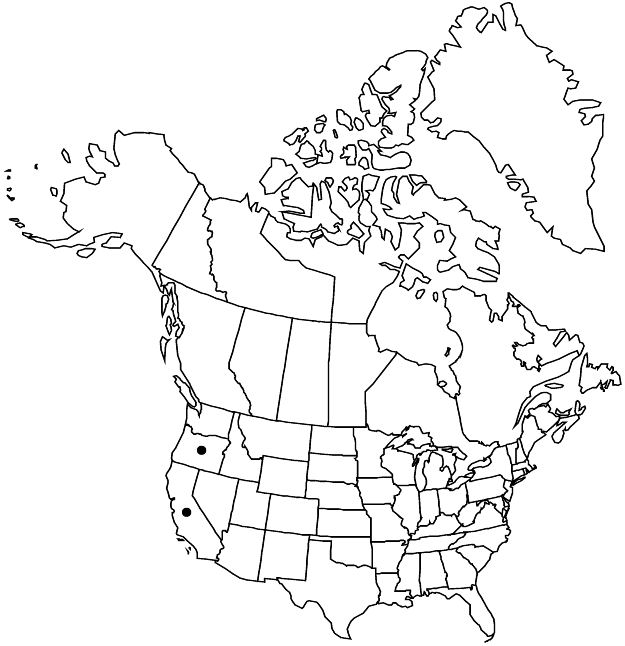Vitis californica
Bot. Voy. Sulphur, 10. 1844.
Plants high climbing, sparsely branched. Branches: bark exfoliating in plates; nodal diaphragms 3–4 mm thick; branchlets terete to slightly angled, tomentose, tomentum thinning in age, sometimes also hirtellous, growing tips not enveloped by unfolding leaves; tendrils along length of branchlets, persistent, branched, tendrils (or inflorescences) at only 2 consecutive nodes; nodes not red-banded. Leaves: stipules usually less than 3.5 mm; petiole ± equaling blade; blade cordate to orbiculate or nearly reniform, 7–15 cm, unlobed or shallowly 3–5-lobed, apex acute to short acuminate, abaxial surface not glaucous, moderately to sparsely tomentose, visible through hairs, adaxial surface sparsely tomentose to glabrate. Inflorescences 5–10 cm. Flowers functionally unisexual. Berries purple to black, moderately to heavily glaucous, globose, 8–10 mm diam., skin separating from pulp; lenticels absent. 2n = 38.
Phenology: Flowering May–Jun; fruiting Aug–Sep.
Habitat: Stream banks, perennial springs, canyons.
Elevation: 10–1500 m.
Discussion
Vitis californica occurs in central and northern California (from San Luis Obispo to Inyo counties north) to southern Oregon. It is variable and intergrades with V. girdiana in southern California, and hybridizes with both V. girdiana and V. vinifera, often making identification difficult.
Selected References
None.
Lower Taxa
"connate" is not a number.

